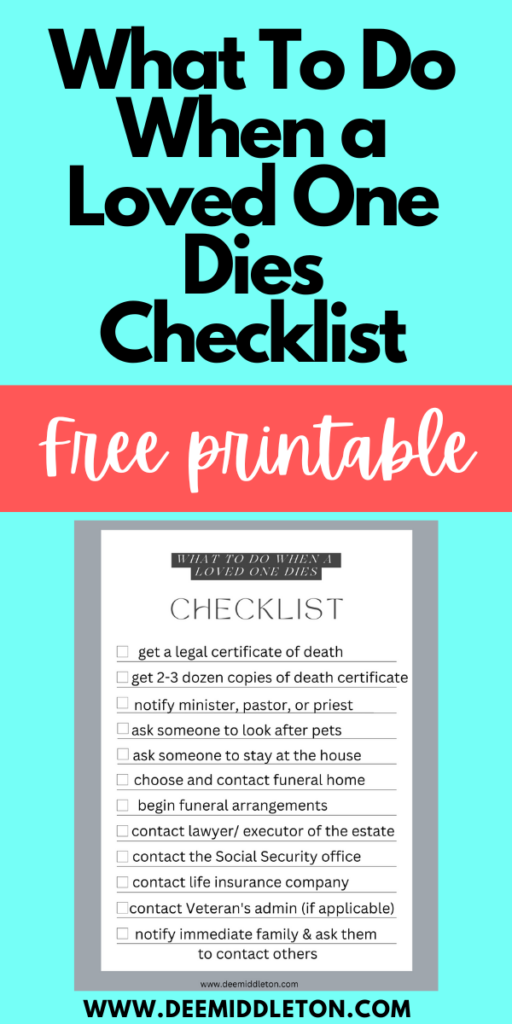3 Steps for Handling Paperwork When a Patient Dies

When the inevitability of death meets the bureaucracy of healthcare, managing the paperwork can be both a logistical and emotional burden on the grieving family. Understanding and completing the necessary documentation efficiently ensures a smooth transition and can even provide a semblance of closure. Here, we explore the three critical steps involved in handling paperwork when a patient passes away, which can aid you through this overwhelming time.
Step 1: Immediate Steps After Death

Upon the passing of a patient in a healthcare facility, the following actions need to be taken promptly:
- Notification: Inform the attending physician or nurse immediately.
- Official Documentation:
- Complete the hospital’s death documentation, which typically includes the time of death, the name of the certifying physician, and basic patient information.
- Fill out and sign the necessary death certificate forms. The details in the death certificate must be accurate for legal purposes.
- Coroner or Medical Examiner: In cases of unattended death, suspicious circumstances, or if an autopsy is required, you may need to notify or involve the local coroner or medical examiner.
☑️ Note: Ensure you have all the personal details of the deceased ready; some questions might arise that require immediate answers.
Step 2: Legal and Administrative Tasks

The next step involves managing the legal and administrative obligations:
- Obtain the Death Certificate:
- The funeral director usually handles this, but the family should obtain copies for their records and for settling estates.
- Copies are required for changing property titles, bank accounts, insurance policies, and Social Security benefits.
- Notify Institutions: Inform relevant institutions like:
- Social Security Administration for any benefit adjustments.
- Insurance companies for the activation of life insurance policies.
- Banks, credit card companies, and other financial institutions for account closures or transfers.
- Estate Administration: Address probate if applicable, including locating the will, appointing an executor, or even settling affairs if there is no will.
🕒 Note: This step might take several days to weeks, so start early to avoid unnecessary stress.
Step 3: Handling Personal Belongings and Documentation

After the legalities are addressed, the focus shifts to the personal effects and documentation of the deceased:
- Retrieving Personal Items:
- From the hospital, nursing home, or any care facility where the patient was staying.
- Ensure you take all valuables, medications, medical equipment, and personal items like clothing and documents.
- Medical Records:
- Request copies of all medical records, bills, and statements for both personal records and for managing ongoing medical debts or insurance claims.
- Inform the physician’s office or healthcare provider about the patient’s death to close the account and prevent further billing.
- Memorial and Disposal:
- Organize or assist with funeral or memorial arrangements. This includes cremation, burial, and obituaries.
- Ensure any personal wishes for donation or organ bequests are respected and carried out.
📜 Note: Some facilities might charge a fee for medical records, so check on this beforehand.
In managing the paperwork after a patient’s death, the focus is on ensuring that the deceased’s final wishes are honored, their estate is settled fairly, and their loved ones can move forward with closure. While the task might seem daunting, breaking it down into these clear steps helps in addressing each aspect with care and efficiency. The key is to keep good records, be proactive in communication with various institutions, and seek support where necessary. Handling the bureaucratic side of death allows families and loved ones to concentrate on the emotional healing process, providing solace in the knowledge that the practicalities are being managed thoughtfully.
What documents are needed for a funeral home?

+
Typically, a funeral home will require a death certificate, identification of the deceased, and potentially a burial permit or cremation authorization. They may also ask for any personal wishes or pre-arrangement documents.
How long does it take to obtain a death certificate?

+
The process can vary significantly by region, but generally, it can take anywhere from a few days to a couple of weeks. However, expedited services might be available for an additional fee.
Is there a time limit for closing a deceased’s accounts?

+
While there is no strict time limit, it’s advisable to start the process as soon as possible. Some accounts might need immediate attention to prevent charges or potential fraud.



